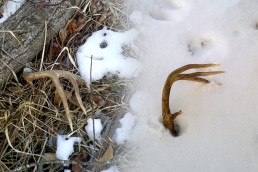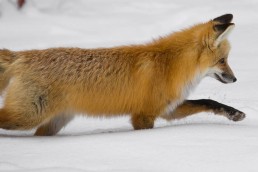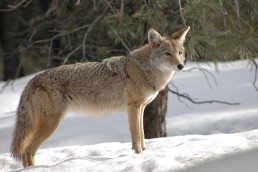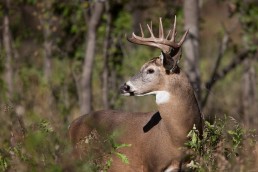Finding Treasured Sheds in the Dead of Winter
SHARE THIS POST
The dead of winter finds many hunters with cabin fever, but one activity peaks soon and offers a way to fight that fever—hunting for deer antler sheds.
Starting around February whitetail bucks begin dropping their antlers that they grew earlier for the fall rut. The exact timing varies from year to year and from place to place, but if they are not already shedding, you can be sure antlers will be on the ground very soon. Looking for them keeps you in touch with nature, and if you are a deer hunter, it could also provide clues to the locations and habits of bucks that survived the hunting season.
In midwinter bucks spend most of their time looking for food, so smart antler hunters focus their attention on places where food is found. Travel paths between feeding and bedding areas are worth checking into. Other promising places include harvested cornfields, places where grain has been spilled on the ground and food plots on conservation areas. Game trails, logging roads, wooded fencerows and stream corridors are natural travel lanes for deer and should be checked. South-facing slopes are favorite bedding areas because they offer maximum exposure to warm sunshine on clear days.
Hunting shed antlers is like any other kind of hunting. The more you do it, the better you become. Veteran antler hunters in productive areas might bring home dozens of these trophies each year. Don’t be discouraged if you just find one or two antlers, or none on your first time out. You will find other rewards that will get you coming back to the woods this time of year.
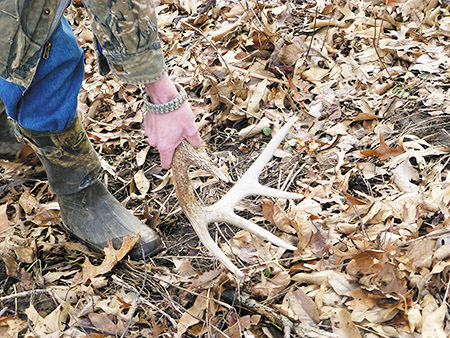
You might find antlers at any time of the year, but the best specimens are available February through April. Mice, squirrels and even deer chew on antlers to get the nutrients they contain, so whole antlers do not last long in the wild.
Are you enjoying this post?
You can be among the first to get the latest info on where to go, what to use and how to use it!
There are many uses for shed antlers, including making knife handles, lamps, pool table lights, dog chews, coat racks, rocking chairs and even chandeliers. If you notice some of the ads for deer chandeliers in log home magazines, they do sell for a lot of money. Good brown antlers can bring as much as $8 to $10 per pound—a good way to supplement your income.
Should you hunt shed antlers on private property, be sure to get permission from the landowner. Also, if you find antlers attached to a deer’s skull, contact a conservation officer before keeping them to receive possession authorization.
Otherwise, if the antlers they are not attached, authorization is not needed.
Here are additional tips to help find sheds:
- Every 50 yards do a slow and full 360-degree scan of the ground behind you. Often, antlers that are obscured from one angle could very well be noticeable from another.
- If you have the time and access to property where you are the only one shed hunting, improve your success by slowing down and being methodical in your search.
- Use your GPS to mark places where you find sheds. Then add those places to your maps and journal.
- Even if you are not a fan of glassing to scan for sheds, they can still be helpful, allowing you to verify bright and antler-shaped objects in the distance.
- Do not forget: Dress in layers and hats and gloves. Moisture-wicking fabrics like fleece will keep you from getting damp and cold, should you become lost or injured.
In short, hunting for shed antlers is a lot of fun. Some days you will find more than other days. To improve your odds, wait as long as you can before “green-up” before going out to look. Some bucks drop early; others drop late. Waiting longer equates to more antlers on the ground, increasing the odds in your favor. Always head out before things warm up too much and the vegetation gets too tall, for all can keep you from seeing the sheds. Remember, conditions with limited visibility as well as the temperature can work against you.
MWO
SHARE THIS POST
Did you enjoy this post?
You can be among the first to get the latest info on where to go, what to use and how to use it!
MWO
We believe being outdoors is good. With more than 1,000 articles each year, MidWest Outdoors magazine is all about sharing outdoor experiences with you—where to go, what to use and how to use it… whether you’re close to home or on that trip of a lifetime.
